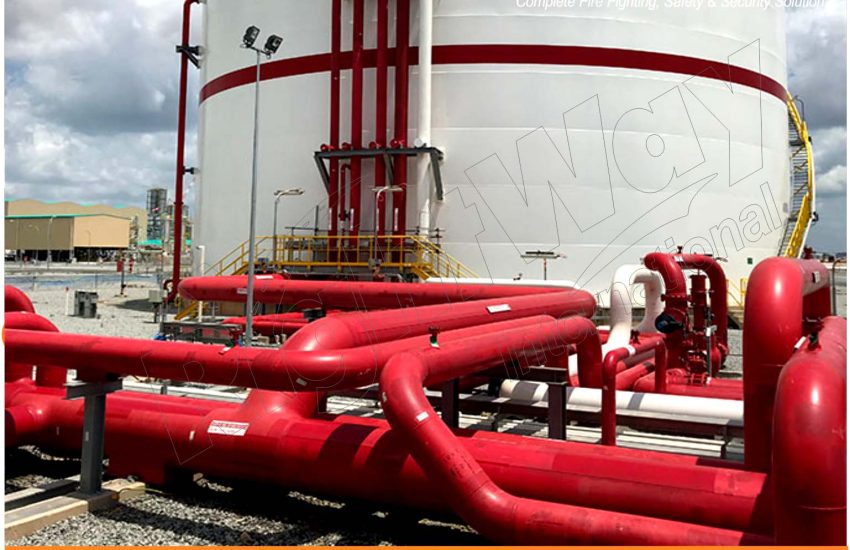What is a Fire Water Storage Tank?
Fire Water Storage Tank is a critical component of fire protection systems, designed to provide a reliable supply of water for firefighting purposes. These tanks ensure that sufficient water is available during emergencies, particularly in areas where municipal water supplies may be inadequate or unreliable. Fire water storage tanks commonly support industrial facilities, commercial buildings, and remote locations.
Types of Fire Water Storage Tanks
- Above-Ground Tanks: Place these tanks above the ground, typically using materials like fiberglass, steel, or concrete. They are easy to access for inspection and maintenance.
- Below-Ground Tanks: Buried tanks shield against environmental factors and often fit areas where space is limited. They require careful installation to ensure structural integrity and prevent leaks.
- Portable Tanks: Movable tanks serve temporary setups, such as construction sites or disaster relief operations. Teams can quickly deploy and fill them as needed.
How Fire Water Storage Tanks Work
- Water Supply: Fill tanks with water from municipal sources, wells, or dedicated fire hydrants. Depending on local regulations and requirements, you can treat the water or leave it untreated.
- Pumping System: Many fire water storage tanks are equipped with pumps that provide adequate pressure for firefighting systems, such as sprinklers or hose connections.
- Monitoring: Tanks often include level indicators and alarms to monitor water levels, ensuring that the supply is always sufficient for emergencies.
Applications of Fire Water Storage Tanks
Fire water storage tanks are essential in various settings, including:
- Industrial Facilities: Factories and processing plants where fire hazards are present.
- Commercial Buildings: Office complexes, shopping centers, and hotels that require reliable fire protection.
- Residential Developments: Communities in remote areas where municipal water pressure may be insufficient.
- Agricultural Operations: Farms with equipment and materials that pose fire risks.
Advantages of Fire Water Storage Tanks
- Reliability: A constant water supply for firefighting ensures availability, even in emergencies when regular sources may become compromised.
- Flexibility: You can customize the size and capacity of tanks to meet specific fire protection needs based on the facility’s risk assessment.
- Cost-Effectiveness: Reduces the need for extensive municipal water infrastructure, especially in remote areas.
Challenges and Considerations
- Regulatory Compliance: Fire water storage tanks must comply with local building codes and fire safety regulations. Regular inspections may be required.
- Maintenance: Routine maintenance is essential to ensure the tank’s integrity and prevent issues such as leaks, sediment buildup, or contamination.
- Environmental Concerns: Proper containment measures should be in place to prevent any potential leaks from affecting the surrounding environment.
Conclusion
Fire water storage tanks play a vital role in ensuring effective fire protection across various industries and settings. By providing a reliable water supply for firefighting efforts, these tanks help safeguard lives and property from the devastating effects of fire. Understanding their types, operation, and applications is essential for organizations looking to enhance their fire safety strategies. Regular maintenance and compliance with regulations are key to ensuring these systems function effectively when needed.


